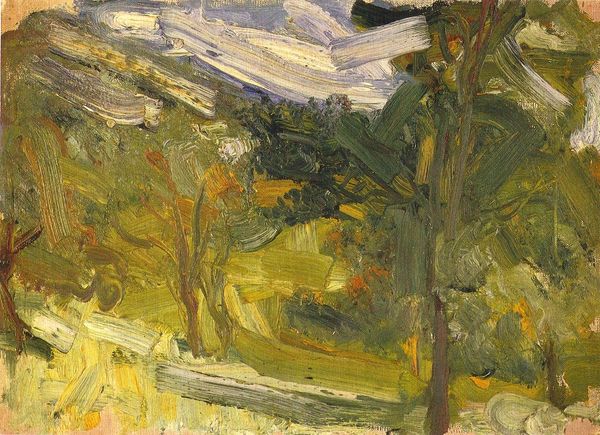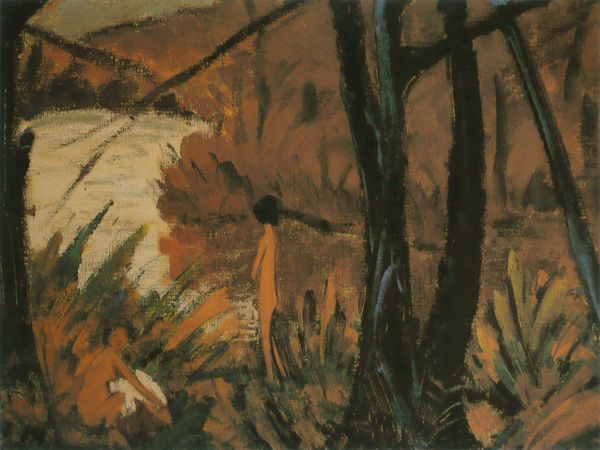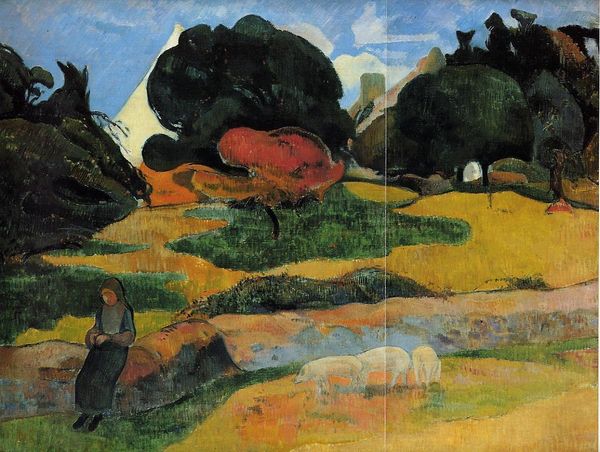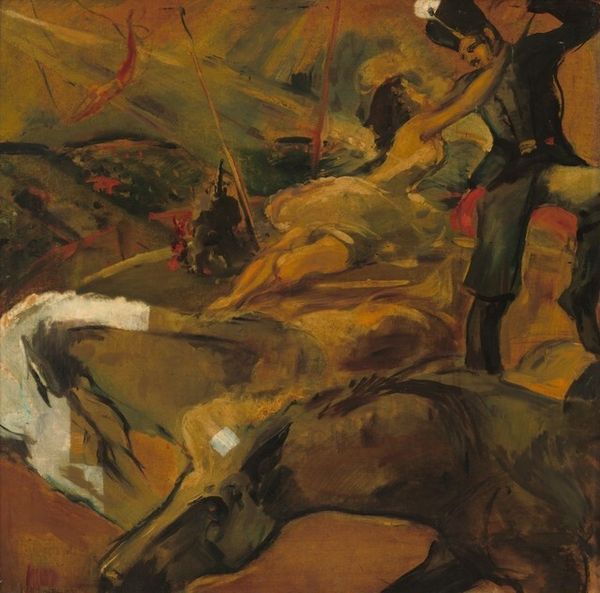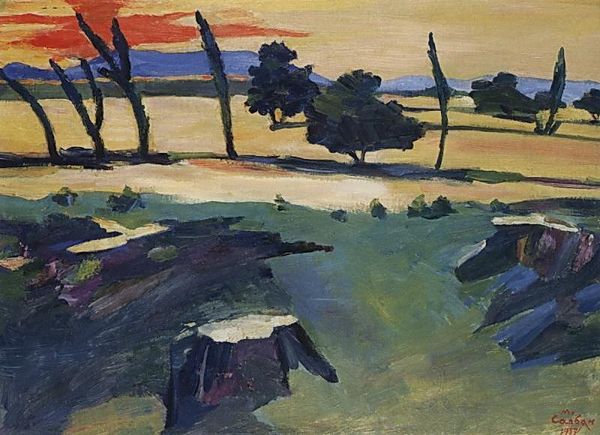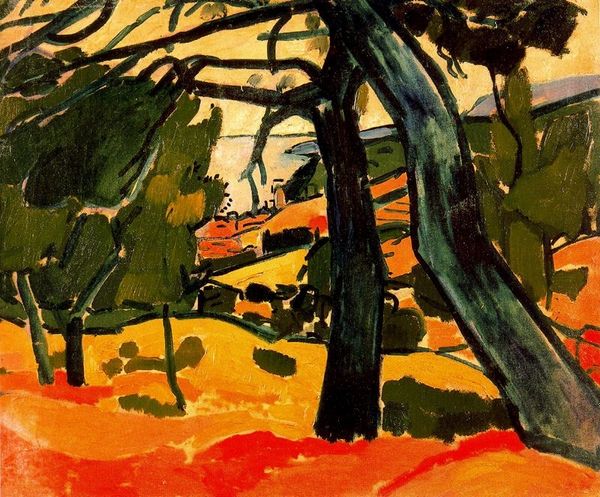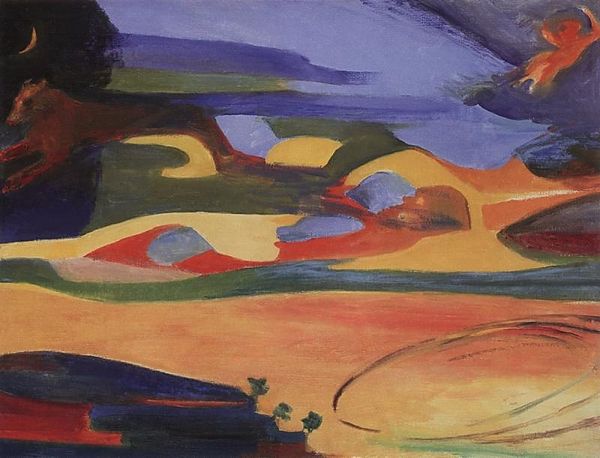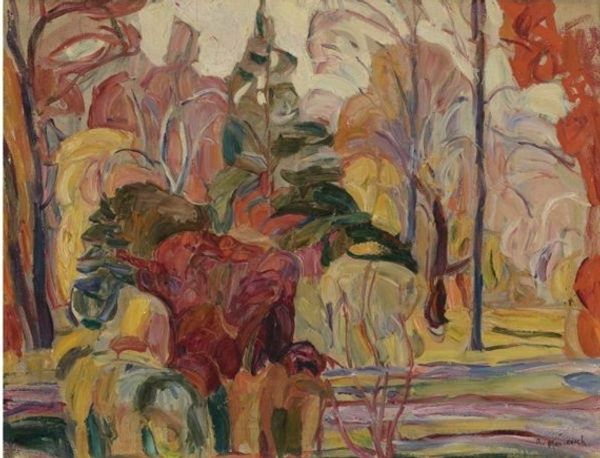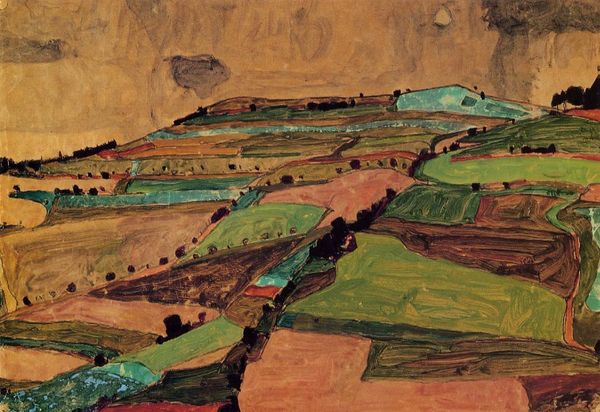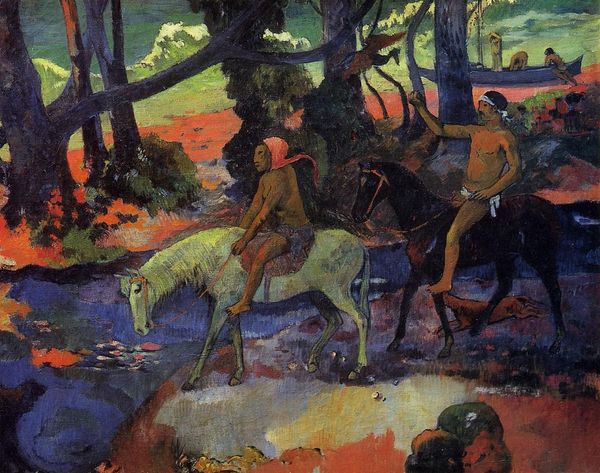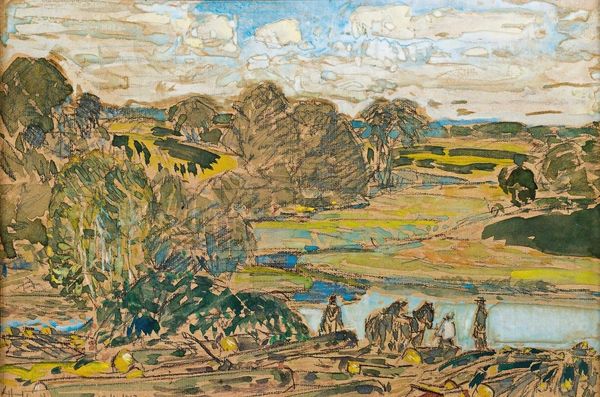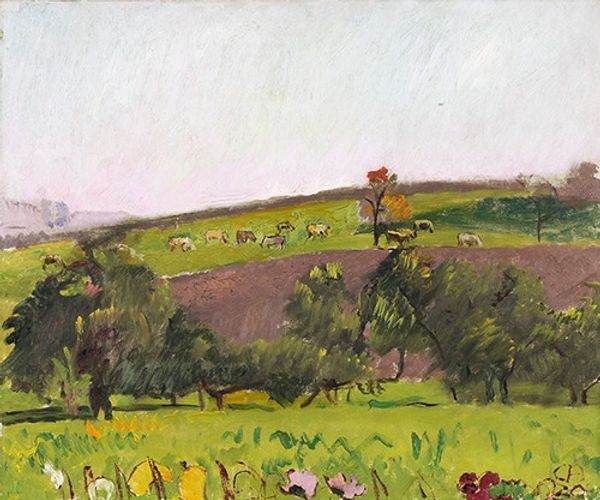
acrylic-paint
#
fauvism
#
fauvism
#
landscape
#
acrylic-paint
#
figuration
#
acrylic on canvas
#
expressionism
#
expressionist
Copyright: Grégoire Michonze,Fair Use
Curator: Here we have "In the Village" by Grégoire Michonze, rendered in acrylic paint. The work is undated, and this vibrant artwork encapsulates rural life with energetic brushstrokes and bold colours. Editor: It’s remarkably evocative; the swirling figures, the almost fauvist palette…it feels like looking at a memory. The somewhat crude, perhaps rushed, application of the acrylic is striking; there’s very little blending. Curator: Exactly! The handling of acrylic is crucial here. Michonze isn’t trying to disguise the material. Instead, the opacity of the paint itself, the flat areas of color and the unmodulated planes demonstrate an interest in disrupting conventional artistic hierarchies by favoring materiality and immediacy over refined finish. It blurs the lines between, say, painting and folk craft traditions, prompting one to contemplate the social significance inherent in such a choice. Editor: I agree; that materiality connects, for me, to the representation of rural communities within modern art history and the politics embedded in depicting these lives, particularly within early 20th-century Europe with its waves of modernization and political turmoil. The somewhat frenzied activity within the image hints at the intensity of living close to the land. Look how bodies strain, pull. Michonze's vibrant figuration offers a crucial window into everyday experiences. Curator: The limited blending and the almost illustrative approach, further reinforces an interesting narrative regarding access and the democratization of art production itself. Acrylics, more affordable than oils for many at the time, potentially broadens accessibility for a wider range of practitioners. It is important to emphasize these material dimensions shaping who gets to make art, and whose stories get represented. Editor: That focus on the lived experiences—of rural life, of the very act of making—helps us resist simply romanticizing “the village” as some pre-industrial idyll. There’s something quite anxious within the scene too, no? This wasn't necessarily idyllic existence; there’s visible hard labor. Curator: Precisely, thinking critically about art production and access enriches our experience. Editor: Thinking critically—allowing those different, and even conflicting, narratives to coexist—is crucial, don’t you think? I feel the tension between labor, access, materiality and community so clearly here. Curator: I wholeheartedly agree, it provides a unique perspective into the socio-economic realities affecting artistic choices and how that ties into representation itself.
Comments
No comments
Be the first to comment and join the conversation on the ultimate creative platform.
